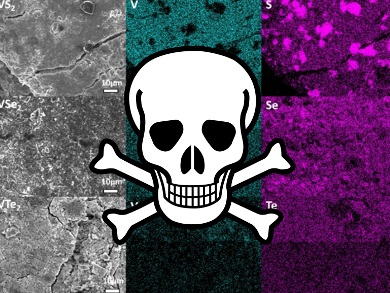There is a constant drive to find new materials for applications in batteries, capacitors, catalysts, and others. While everyone wants, for example, longer lasting cell phone batteries, the potential hazards present in everyday electronics are often overlooked. It is essential that new materials are evaluated for their potential dangers.
Martin Pumera, Nanyang Technological University, Singapore, and colleagues have investigated the toxicity of vanadium dichalcogenides, an important group of materials with the potential for energy applications. The possible health effects were studied by incubating the materials with human lung tissue. This tissue was chosen because inhalation is a likely first point of entry to the human body. The degree of cell viability after 24 hours was used as a measure of the toxicity of the material. The conditions were chosen so that the results could be easily compared to numerous other studies of inorganic nanomaterials.
The results indicate that vanadium dichalcogenides are significantly more toxic than other transition metal dichalcogenides such as MoS2, WS2, and WSe2. They are also more harmful than graphene and its derivatives. Based on the results, precautions can be taken before the materials are used commercially.
- Cytotoxicity of Exfoliated Layered Vanadium Dichalcogenides,
Naziah Mohamad Latiff, Zdeněk Sofer, Adrian C. Fisher, Martin Pumera,
Chem. Eur. J. 2016.
DOI: 10.1002/chem.201604430


